I’ve seen it a lot – you need to increase organic traffic to your blog, but the hours spent writing posts every week aren’t moving the needle.
You’re already hard-pressed to keep writing on a consistent basis, let alone add anything else to your plate. There’s a blog to manage, emails to send, social channels to update, and a business to run.
But remember, if no one ever sees your content, you’ll never have positive ROI on your content marketing efforts.
So what are you supposed to do, just give up on content? No friend. Let’s get your content out there!
Solving The Content Puzzle
Don’t give up! Instead consider dividing the time you spend on writing content between all three pieces of the content puzzle: Creation, SEO, and Distribution.

When it comes down to it, doing one or two of these pieces without the other is shooting yourself in the foot.
Simple factors like frequency of posting on your blog are no longer all it takes to land a page one ranking.
There are 4 million blog posts published every day.
HostingFacts.com
Don’t dismay – some of those 4 million posts are not in your niche, poorly written, riddled with typos, lacking optimization, over-packed with ads, or just not helpful.
So make sure you’re one of the bloggers doing it right. You may be publishing fewer posts, but your results will be more valuable.
Keep reading to see how it’s done and download your own checklist to increase organic traffic right here.
20 Ways to Increase Organic Traffic
Whether it’s an older post or hot off the keyboard, you can use this list of 20 suggestions to increase organic traffic.
What can you expect to see from making these upgrades consistently?
- Improved Rankings = More Visitors
- New Keyword Opportunities = New Qualified Traffic
- In-Depth Content = Increased Average Page Time
- Internal Linking = Reduced Bounce Rate & Higher Page Authority
- More Backlinks = Higher Page Authority & Increased Referral Traffic
Need to take a step back and work on your content first? We have a full roadmap on how to include SEO in your content creation process right here.
How to Increase Organic Traffic
- Research the competition and optimize to win.
First and foremost, you want to see who is already ranking for your keywords and what they’re doing that you’re not.
Google your primary keyword and review the title, meta description, URL, and actual content of the top ranked listings. Don’t try to just copy your competition, ask how can I do it better?
- Increase the word count.
The average #1 ranked organic listing on Google is 1,800 words in length. Not every blog post you write needs to be a novel, but I would recommend having pages (or posts) covering all of your primary keywords that are between 1,500 and 2,000 words. These are what we call anchor pages.
- Add it to your navigation.
Adding a post or page to your navigation menus tells Google it’s important to your site. Don’t overdo it, but consider adding relevant links to your main menu, footer menu, sub-menus, and sidebars* (*if they’re still relevant to your site layout.)
You can see how the SEO experts at SearchEngineLand have organized their sub-menus into pages focused on important secondary keywords:
- Turn the post into a page.
Pages tend to hold more authority than posts, so when a blog post that covers an important topic is doing well, consider changing the post format into a page. If you’re on WordPress, you can do this using a plugin like Post Type Switcher.
- Add a map.
Local searches like “near me” phrases have become highly searched in recent years, so if location is relevant to your content consider embedding a helpful map. This also helps to improve your HTML to Text ratio, a common ranking indicator.
You can embed using a location plugin or directly from Google Maps like so:
- Add videos.
Embedding videos in your content has a few advantages: it increases your HTML to Text ratio, makes your content visible in video searches, and it makes your content more dynamic for those who prefer to watch and learn. If you include closed captions with your video as well, it improves accessibility (a newer ranking factor).
Try to embed using a video hosting platform like Vidyard or Wistia. YouTube embed links take people away from your site. - Create, source, and embed graphics (with alt text).
Add valuable custom graphics such as infographics, quotes, user generated content, gifs, and statistics to increase your shares and image backlinks from other sites.
Remember to include specific keywords in the alt text and file name of your graphics so you will also show in organic image searches, like this: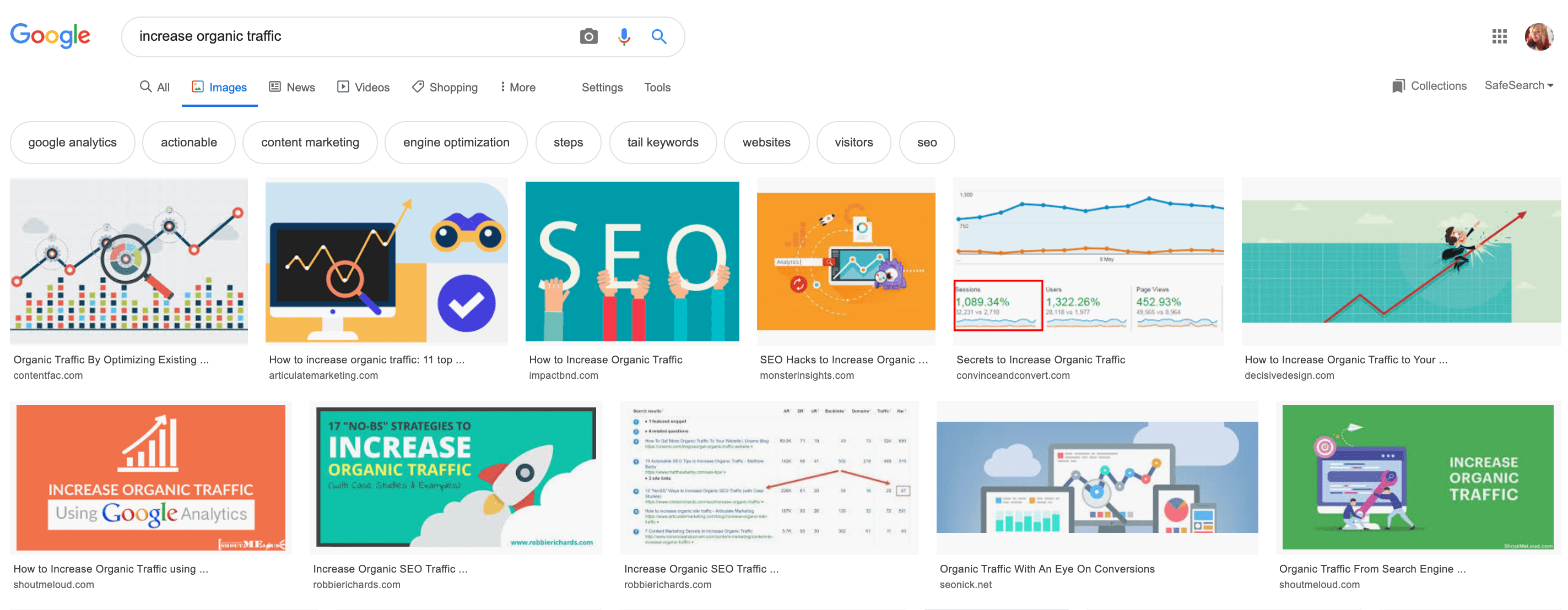
- Add internal links.
Be sure to link key phrases you’ve already written about throughout your content (aka contextual links). This demonstrates you know the topic and helps search engines like Google understand how the piece is relevant to the rest of your site.
You can also a “recommended reading” list at the end of the post to increase pages per session and decrease bounce rates. - Link to this content from existing pages and posts.
A good example of this are guides or FAQs. For instance, if I had an Ultimate SEO Guide page I would go back and add a contextual link to this relevant post on how to increase organic traffic.
This helps to build authority and creates a logical linking structure for search engines to crawl. - Embed RSS feeds and social media.
Typically embedded in sidebars (or preferably within your content because sidebars are now pushed to the footer on most mobile sites), RSS feeds increase the HTML to Text ratio and can add some social proof to your argument. Adding social media, like an embedded tweet, can show your knowledge of thought-leaders in your space or provide product proof if it’s a review.
You can embed RSS Feeds directly from WordPress: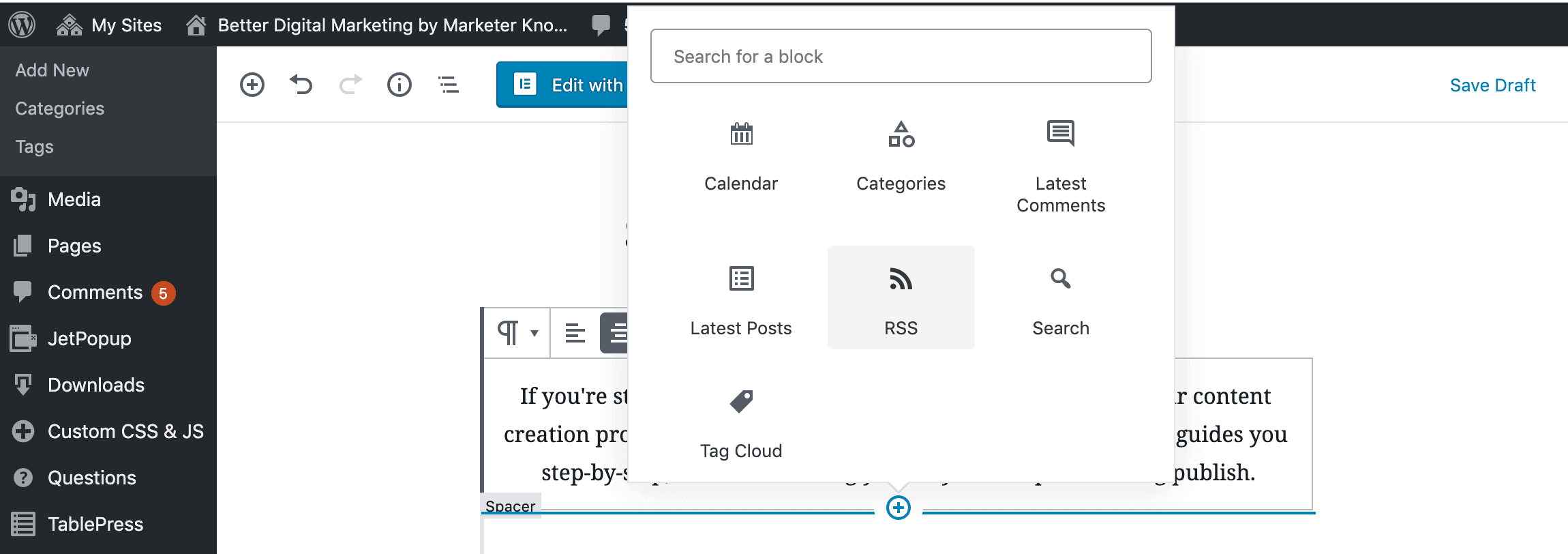
- Add FAQs.
FAQs are a type of rich snippet that is given priority placement in the search engine results page or SERP. (You can see an example of it below.) They’ve been a topic of conversation in 2019 and I can see why – they’re helpful to customers while targeting tertiary keywords that have less competition, but more qualified traffic.
(Tertiary keywords are related to your primary topic, but often come in the form of questions – for example, how do I increase my organic traffic?)
There is a properly formatted SEO block in the new WordPress Gutenberg editor which you can drop into your content and the full FAQ structured data guidelines are here.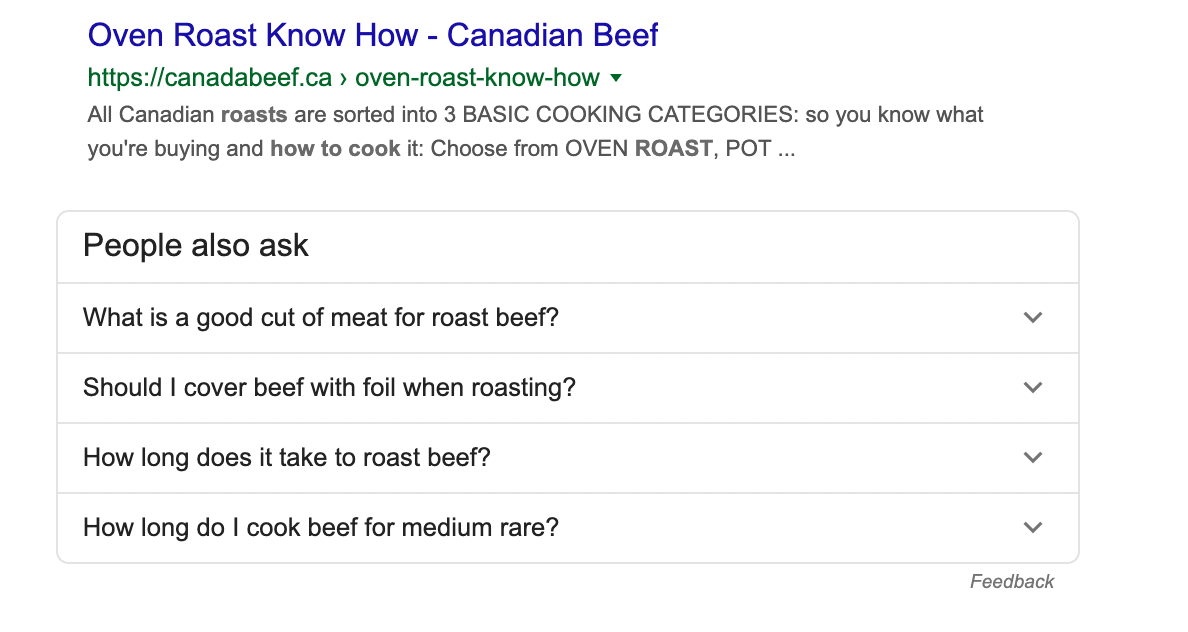
- Add a How To section.
Just like the FAQs, How To instructions will appear as a rich snippet when a question is asked, like the example below. That means more people will see it when searched, not only increasing traffic but also improving the click-through rate of the search result listing.
WordPress has a pre-structured How To block you can use to add relevant instructions to your post (I’m using it right now for this list!)
You can learn more about how to use Google’s different rich snippets here.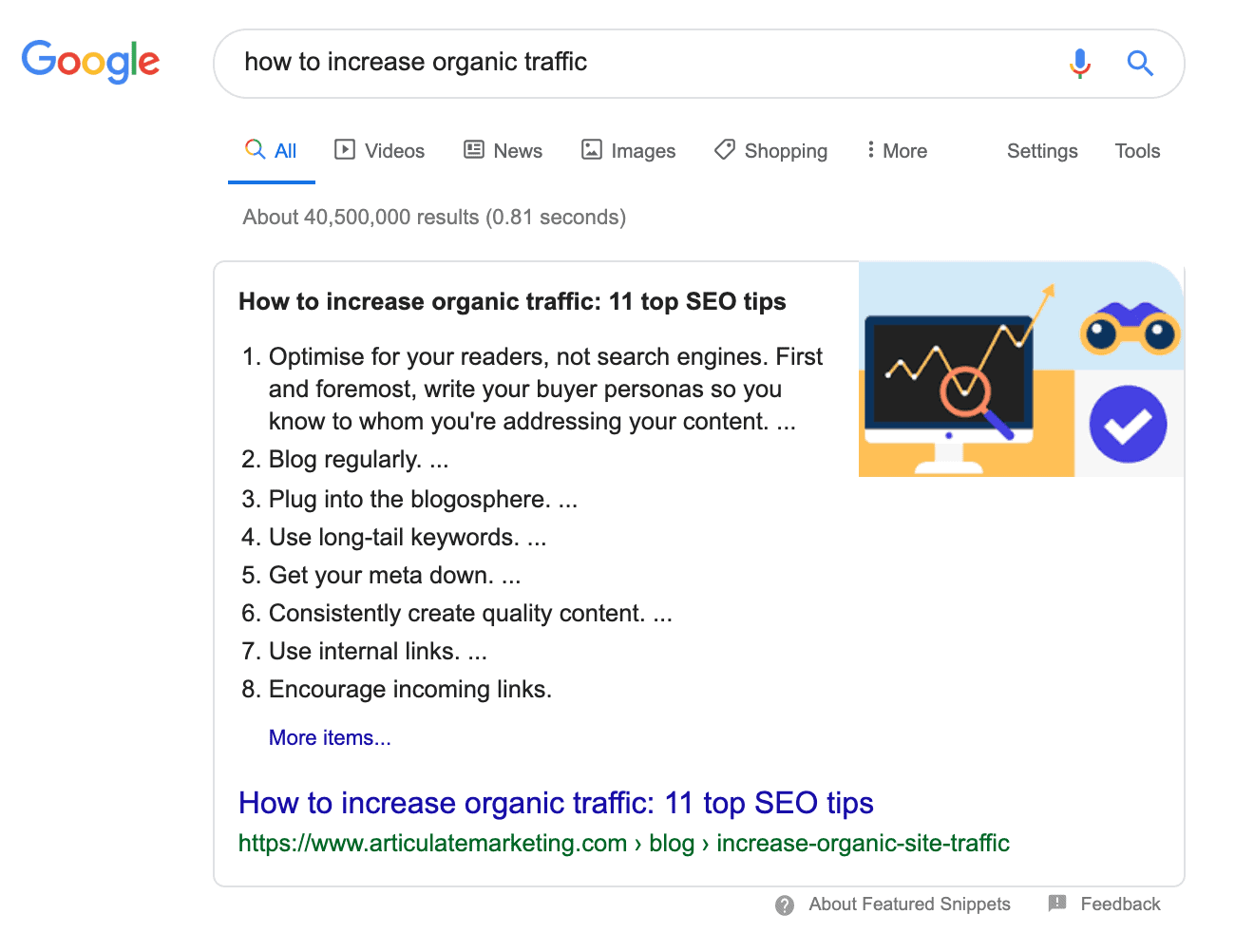
- Add company or product comparisons.
Comparison searches are very popular and represent a more qualified potential sale. If it’s relevant, add a product or company comparison or review section to your blog post with a header, copy, and original media if possible.
You may find you want to create a dedicated page for a specific competitor comparison, or even a campaign around it such as large brands do with their “blind taste test” challenges:
- Add more secondary keywords.
Secondary keywords are related to your primary topic but differ slightly (i.e. increase organic traffic on google would be a secondary keyword for this post). Not sure what your secondary and tertiary keywords are? Try googling your primary keyword and looking at the related searches listed at the bottom of the page.
Avoid keyword stuffing, just do a review to make sure you have secondary keywords relevantly placed in your headers, copy, image alt texts, and listed in your Yoast plugin as related keywords (if you have this premium feature):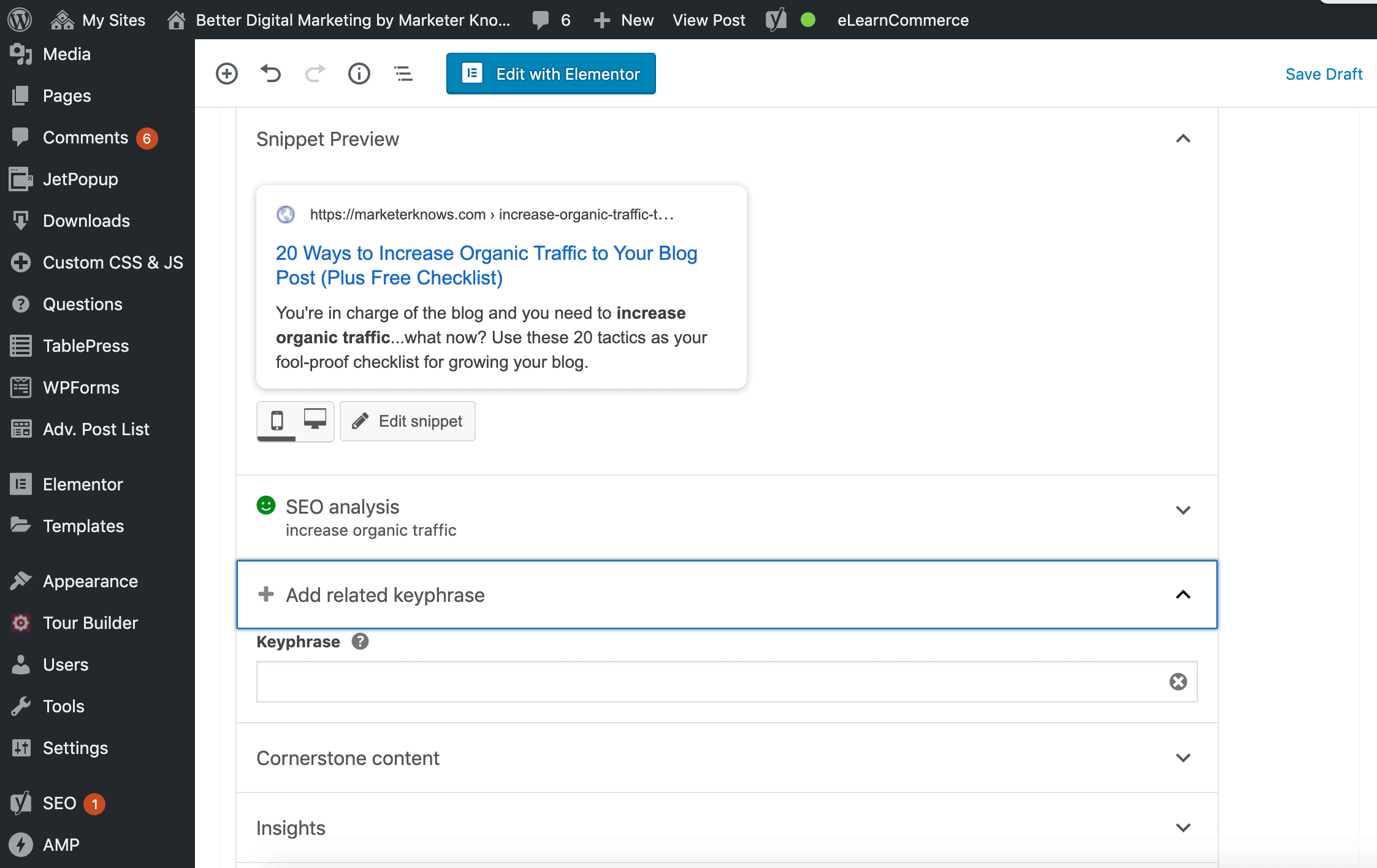
- Create social media backlinks.
Social media backlinks are not amongst the most valuable, but they do help to generate traffic. Make sure you have shared your post on all your social media channels multiple times (I follow the rule of three: original post, reposting three weeks later, and reposting the following month).
You can also tap into online communities you are active in (like Facebook groups, Pinterest boards, LinkedIn groups, Subreddits, Quora, etc.) - Generate backlinks through your network.
Engage in some cross-promotion with partners you have, other brands you own, different locations or franchises, like-minded companies, or even your customers.
Don’t just stop at partner pages and reviews – give them a relevant piece of content they can add contextual links to on their site. Take a look at their blog or site and see how you could potentially add value. - Do backlink outreach.
This has to be done consistently over time, but it’s the best option when you’re still working on developing your network and social following. Backlinks are the backbone of SEO and one of the best ways to increase your sites authority, rankings, and traffic.
Create a lead list of editors of relevant websites, owners of social media accounts in your niche, and reputable companies and professionals in your industry. Make a short-list to start and begin engaging with them authentically (i.e. retweeting or commenting on Twitter). Choose or develop a piece of content to pitch to them, but ask yourself the question “how can my backlink give them value?”
Here are some tools that are helpful with finding backlink leads:
- Collaborate with #1 authority website.
Some keywords you’ll want to rank for will be unwaveringly owned by companies or brands. You can reach out to the top authority site/listing for your keyword with a collaboration offer (interview request, video review, social media takeover, live stream Q&A, Twitter chat, etc.).
If you can gain a quality backlink from a top source, it will improve your own site authority and increase referral traffic. They may even promote a valuable co-created piece of content to their own network. - Use content distribution platforms.
Go beyond sharing to your own email lists and social media audiences. Use content distribution platforms, such as QuuuPromote, Izea, Outbrain, and Taboola.
**You require a minimal budget for these tools, but the exposure through them can increase your organic referral traffic. - Update the publishing date.
Once you’ve make your optimizations, update the publishing date and republish! Do this any time you make a change to content on your site, frequency is still a site health and content ranking indicator.
Download Your Free Checklist
Right click and save your free copy of the Organic Traffic Checklist to include in use your content marketing process.

Still Not Sure About SEO?
If you’re still a bit lost on how to include an SEO strategy in your content creation process, use our professional blog post roadmap that guides you step-by-step, from researching your keyword topic to hitting publish.
Join the Marketer Knows Community to get unlimited access today.
Don’t Stop Learning Now!
How to Use the Seed and Stem Keyword Strategy
Worried About the Google Mobile First Index? We Can Help.
Think You Know SEO? Take the Quiz to Find Out How Much You Know
3 Common Google Analytics Gaps You Need to Plug
How to Increase Conversion Rates with Better Product Content




Responses
[…] 20 Ways to Increase Organic Traffic to Your Blog […]
Their posts always leave us feeling informed and entertained. We’re big fans of their style and creativity.
I can’t get enough of your insightful articles and engaging stories. Thank you for sharing your passion with the world!